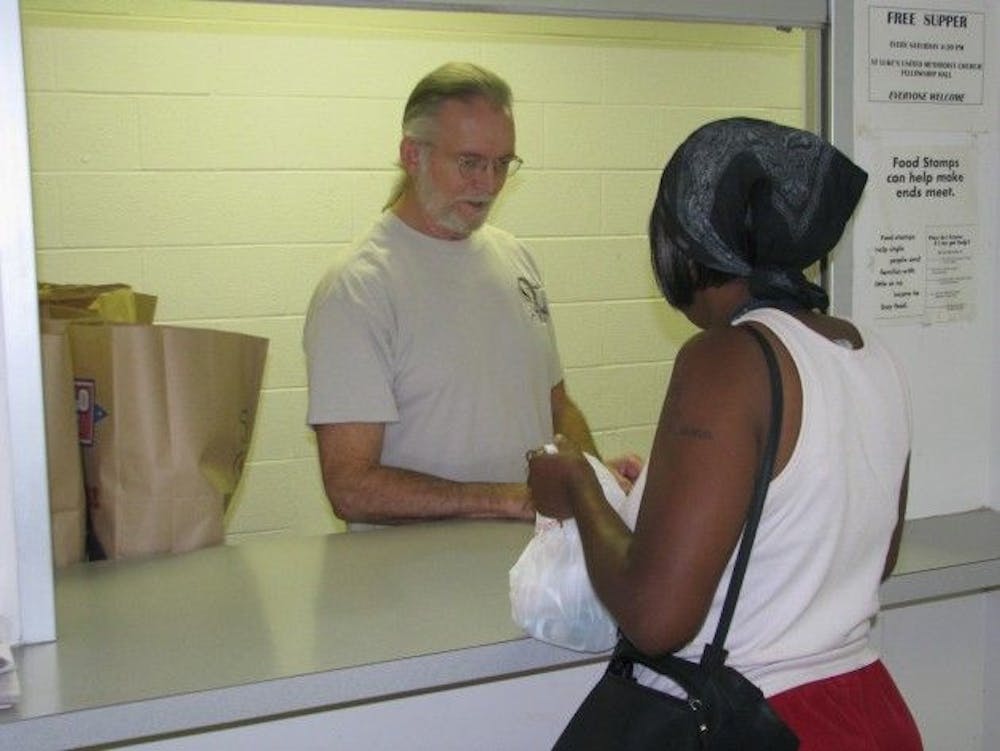In the U.S.-the land of plenty-it can be easy to forget that people go hungry. But food insecurity-not having reliable access to enough food for basic needs-is a problem that plagues 17.6 million American households, according to hunger-relief organization Feeding America. And an increasing part of that 17.6 million are college students.
In a study of 354 students attending a mid-sized rural college in Oregon, scientists found that 59 percent of them faced food insecurity in the previous year. 27 percent of them participated in food assistance programs such as WIC and SNAP. Those who were employed and those who took in less than $15,000 often had the most trouble getting food. It doesn't stop at going hungry-the study suggests that time spent working in order to make ends meet and buy basic food might have a detrimental effect on a student's academic success.
College students go hungry for some of the same reasons other people go hungry-rising food costs and a worsening economy. Exacerbating this is the fact that the "average student" is changing-away from late teens, early twenties with support from home to older students having to juggle getting an education with raising a family and/or holding down a full-time job, the wages for which may not have risen in accordance with the rising cost of living. Students may be unable or unwilling to go to their parents for support. Some might be unaware of whether or not they qualify for assistance. As a result, household budgets are stretched tight and some students are having trouble feeding themselves, let alone their families.
Some reasons-like increasing tuition-are unique to the college experience. For example, in 2011 a full-time, in-state University of Memphis student living off campus paid $7,658 per year for their education, including books and supplies. In 2012, it was $7,980. In 2013, tuition and supply costs climbed as high as $8,740. And 2014 hasn't started off well for the frugal-the spring 2014 semester alone cost $4,156 for an in-state undergraduate student taking twelve credits, and that doesn't factor in supplies, meal plans and other incidental costs. The price goes up exponentially for out-of-state and graduate students.
Hunger on college campuses has become so endemic that a national food bank organization has formed to provide students with food. The College and University Food Bank Alliance operates food pantries on college campuses across the country, from Michigan to Missouri. The CUFBA supports campus-based food pantries by providing education and training to its members.
While the University of Memphis isn't a part of the CUFBA, there are still ways for hungry students to get the food they need.
The Metropolitan Inner-Faith Association provides a number of emergency services to needy households, including homeless shelter placement and financial assistance. They also provide a voucher program for local food pantries. Households are eligible for up to four food vouchers a year after providing picture identification and proof of social security for their children, if any. They're then sent to a local food pantry and given enough food for five to seven days. It's not meant as permanent assistance, but rather as a way to cover gaps in a household's food security.
Joan Dennehy is MIFA's food pantry coordinator. She explained that MIFA is happy to help college students, so long as they meet the requirements.
"We have seen a handful of college-age students coming in to request vouchers," Dennehy said. "It hasn't been a huge number, but we've seen a few, more than last year, probably."
One MIFA food pantry that serves the university area is located at St. Luke's United Methodist Church at 480 S. Highland St. It's part of the University Cluster Food Pantry, a group of churches who, since 1981, have been providing food for needy Memphians. St. Luke's serves three ZIP codes-38111, 38114 and 38117-and helps an average of about 60 to 65 households a week.
Beverly Nicholson is the director of the food pantry at St. Luke's. She understands how students could become food insecure.
"Someone who's living off campus and has expenses to pay probably has a need," Nicholson said.
In Tennessee, college students are eligible for SNAP, provided they're working at least 20 hours a week, enrolled in a work-study program, caring for dependents or enrolled in the state's "Families First" program, and the state's income test for food stamp eligibility doesn't take into account scholarships or financial aid. Even so, that eligibility could be threatened by prior drug-related felony convictions.
Twenty-two percent of Shelby County residents-or 204,130 people-are food insecure, exceeding the state average of 17.6 percent, according to a study by Feeding America.




